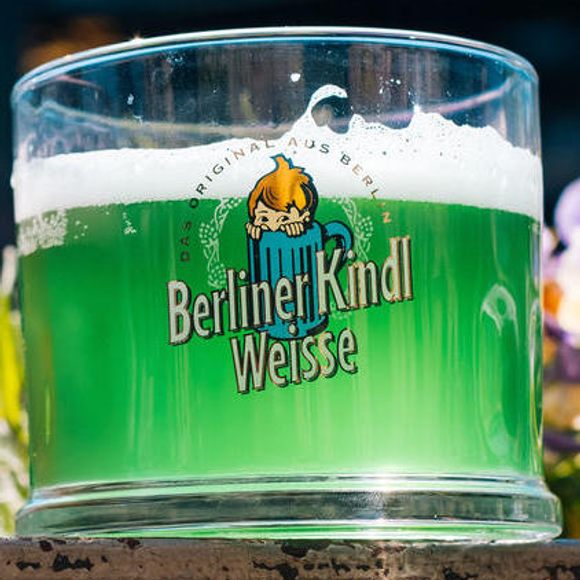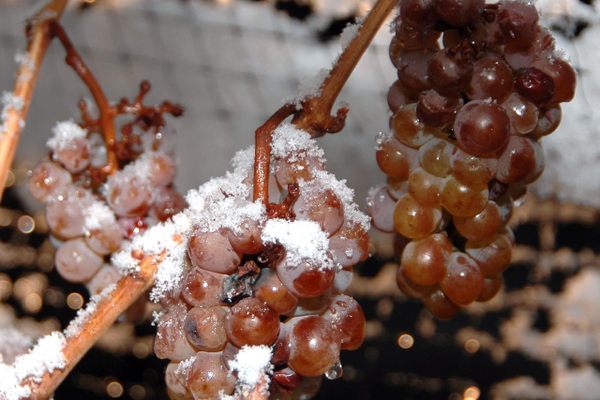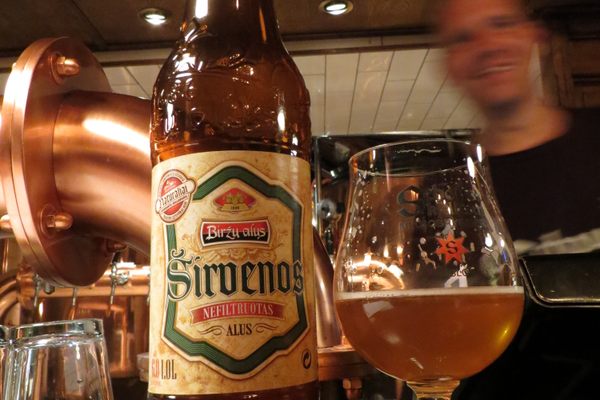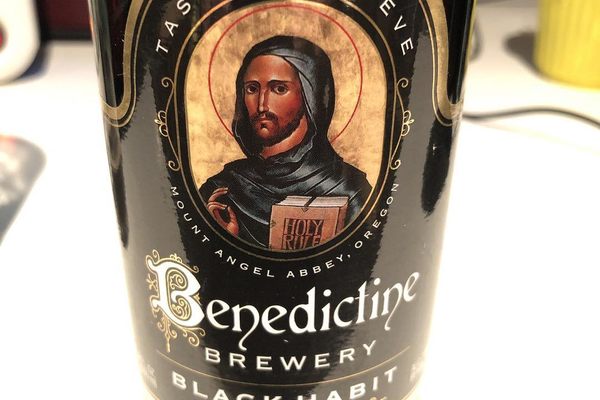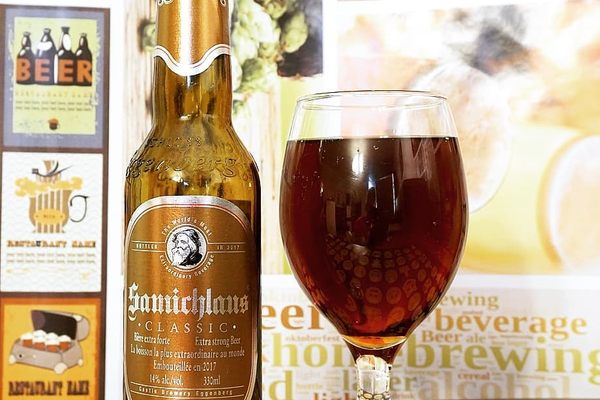It’s a sweltering summer day in Germany. You scan the menu at a local brewery for something light and refreshing, and choose Berliner weisse. In minutes, a bright green beer arrives. You sip. It’s perfect: tart, fizzy, and with just the right herbaceous twang.
Green? Tart? Compared to the crisp lagers that proliferate the country, Berliner weisse is an oddity. Along with its sour cousin, gose, the wheat ale hearkens back to a time when brewers in northern Germany lived by their own rules. Literally. The area evaded the beer purity laws known as Reinheitsgebot for centuries, allowing brewers to create funky, sour ales that resemble Belgian styles more than those of the Rhineland.
The Belgian similarities begin with the fact that Berliner weisse is a wheat beer. (Like the famous witbiers, or “white beers,” of Belgium, weisse also means “white.”) Then there’s the sour flavor, which comes from a bacteria known as Lactobacillus. The French found this tart acidity, coupled with the beer’s high levels of effervescence, to be reminiscent of sparkling wine. During Napoleon’s push into Germany in the early 1800s, his troops dubbed Berliner weisse “the Champagne of the north.”
Later in the 19th century, Germans started to find Berliner weisse a little too tart and added sweeteners to soften its acidity. Originally, they added kümmel, a caraway-based liqueur. More popular today, however, are the green-tinged woodruff (waldmeister) syrup, based on the sweet-scented bedstraw plant, and a pink raspberry syrup known as himbeersaft.
Unfortunately, Berliner weisse faded in popularity in the 20th century, and it’s still tough to track down in its native home. With a little effort, however, you can find it in Germany and the United States. The recent rarity only adds to the mystique of a beer that has defied convention and beguiled invaders and imbibers for centuries.
Where to Try It
-
Berliner-Kindl-Schultheiss-Brauerei
Indira-Gandhi-Str. 66-69, Berlin , 13053, GermanyKindl has been in the Berliner weiss game for centuries. The brewery still serves the beer, on tap and in bottles, along with food and tours of their facility.
-
Haus der 100 Biere
Kurfürstendamm 100, Berlin, 10709, GermanyLiterally the "House of 100 Beers," this beer emporium and restaurant often features Berliner weisse on its menu. Call to make sure it's available before visiting.
Written By
 Sam OBrien
Sam OBrien
Sources
- books.google.com/books?id=twkRFn75VAEC&printsec=frontcover&dq=tasting+beer&hl=en&sa=X&ved=0ahUKEwiBhI3AqL_YAhWKQt8KHbskCt8Q6AEILTAB#v=onepage&q=tasting%20beer&f=false
- books.google.com/books?id=p24Ktw6BDVoC&pg=PA65&dq=napoleon+berliner+weisse&hl=en&sa=X&ved=0ahUKEwjDlYyjsL_YAhXoSN8KHShMCrMQ6AEIRDAF#v=onepage&q=napoleon berliner weisse&f=false
- books.google.com/books?id=FFPHAwAAQBAJ&printsec=frontcover&dq=beer+for+all+seasons&hl=en&sa=X&ved=0ahUKEwj59rvUt7_YAhXDkOAKHTcvDScQ6AEIKjAA#v=onepage&q=berliner%20weiss&f=false
- www.thrillist.com/drink/berlin/10-things-you-didn-t-know-about-berliner-kindl
- books.google.com/books?id=Ga4MYyZq-RMC&q=berliner+weisse#v=snippet&q=berliner%20weisse&f=false



